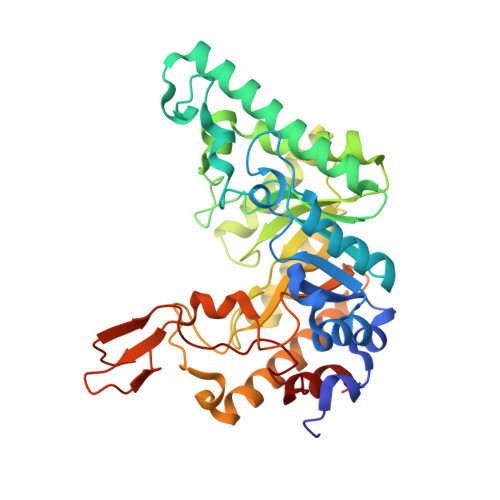Mapping glycoside hydrolase substrate subsites by isothermal titration calorimetry.
Zolotnitsky, G., Cogan, U., Adir, N., Solomon, V., Shoham, G., Shoham, Y.(2004) Proc Natl Acad Sci U S A 101: 11275-11280
- PubMed: 15277671
- DOI: https://doi.org/10.1073/pnas.0404311101
- Primary Citation of Related Structures:
1R85, 1R87 - PubMed Abstract:
Relating thermodynamic parameters to structural and biochemical data allows a better understanding of substrate binding and its contribution to catalysis. The analysis of the binding of carbohydrates to proteins or enzymes is a special challenge because of the multiple interactions and forces involved. Isothermal titration calorimetry (ITC) provides a direct measure of binding enthalpy (DeltaHa) and allows the determination of the binding constant (free energy), entropy, and stoichiometry. In this study, we used ITC to elucidate the binding thermodynamics of xylosaccharides for two xylanases of family 10 isolated from Geobacillus stearothermophilus T-6. The change in the heat capacity of binding (DeltaCp = DeltaH/DeltaT) for xylosaccharides differing in one sugar unit was determined by using ITC measurements at different temperatures. Because hydrophobic stacking interactions are associated with negative DeltaCp, the data allow us to predict the substrate binding preference in the binding subsites based on the crystal structure of the enzyme. The proposed positional binding preference was consistent with mutants lacking aromatic binding residues at different subsites and was also supported by tryptophan fluorescence analysis.
- Department of Biotechnology, Technion-Israel Institute of Technology, Haifa 32000, Israel.
Organizational Affiliation:




















